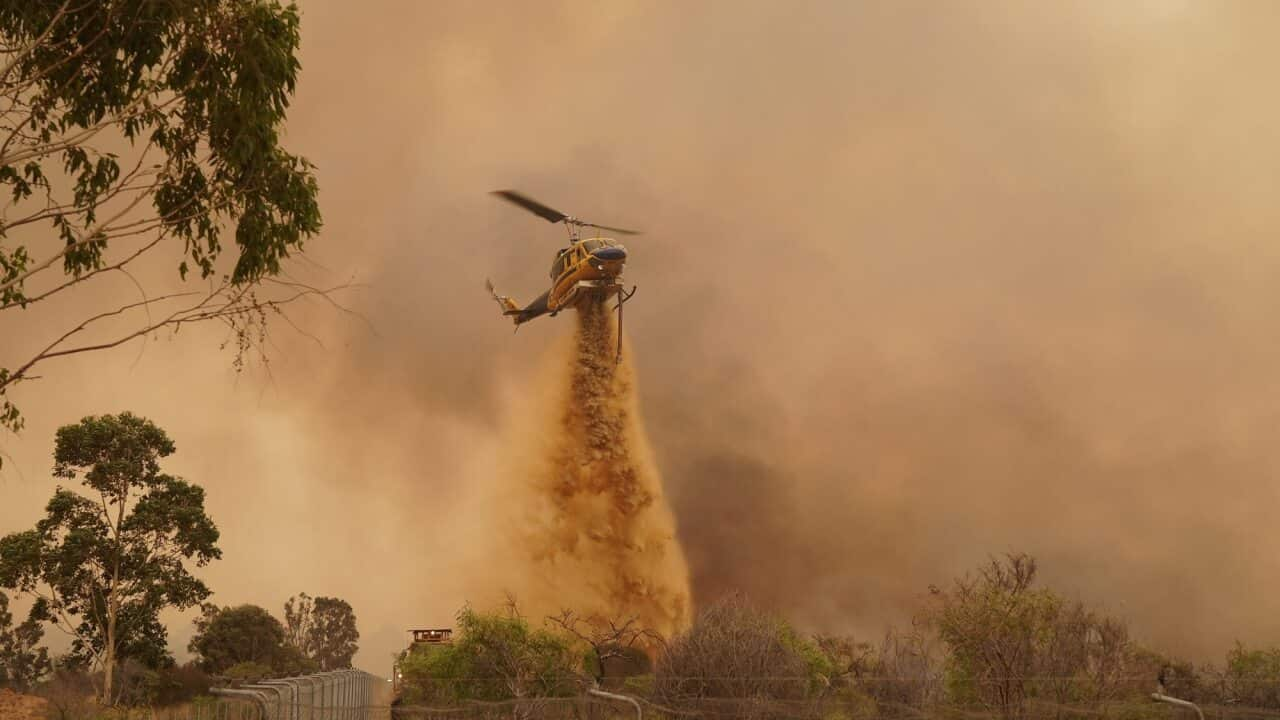Bushfires are strange natural phenomenon which affect different aspects of our life. Every year different parts of Australia experience bushfires and this includes the current fires in Western Australia.
Although these events are astonishingly massive, they are not new. Bushfires are so ancient which are a part of evolution of life on our planet. The fires have shaped the life cycle on Earth and the living creatures have adapted to this phenomenon over millions of years. So, why do we panic from bushfires and run away from them? Can we name some fires as “good bushfires”?
John Grant from the Southern Cross University told SBS Persian that the nutrient and water cycles that have evolved to support the plant and animal communities on a fire affected site commonly require a particular fire regime to maintain them.
“Fires don’t add nutrients, but they can make existing nutrients more available. Nutrients that were tied up in tissues and complex organic molecules can be made soluble and available for plants to take up.” Dr Grant added.
Changing fire regimes definitely impact upon carbon levels and the availability of particular nutrients - especially nitrogen, but the extent of these changes hasn’t been fully documented.
But this positive effect can only be achieved if the fire happens in the right time and place and with the desired intensity. When this is not the case, the fires can destroy the vegetation and expose the soil to extreme erosion. This would have a direct effect on the quality of life of the native animals in addition to spoiling the soil and nutrients for the vegetation.
“Many tree species provide essential shelter/hiding for small forest dwelling birds, and high energy nectar and flowers for birds and many mammals. These shrubs are very vulnerable to fire and rely on a seed bank in the soil to regenerate after a fire burns them. But if the fires are too frequent that seed banks can be exhausted before mature plants can replace it, again leading to starvation for those animals that need it” said Cris Brac from Fenner School of Environment and Society of ANU to SBS Persian.
“Removal of shrubs and grasses also means loss of hiding spaces and many predators (including feral cats) take advantage of that to hunt the weakened prey unable to hide” he added.
Dr Grant explained that soil formation rates which are around 1mm every 10 years, are unsustainable. Fire impacts upon existing organic matter in the soil and also reduces short term input of organic matter due to vegetation loss. Organic matter in soils plays an essential role in cycling nutrients, supporting the soil ecosystem and acting to tie carbon up and out of the atmosphere.
He added that soils can also be made “hydrophobic” following fire events. This reduces water penetration in ensuing rainfall events and can precipitate erosion.
Huge fires like “Black Summer” bushfires affect air quality across the world. They also contaminate the water resources and the contaminant can enter the international waters and travel a long way. But is there such an effect on the environment on a global scale?
Dr Grant believes that soils are naturally enriched over geological time by nutrients in the atmosphere. He explains that fires add huge amount of sulphur to the atmosphere which may result in the acidification of rain with consequential impacts on soil, forests and waterways.
Considering the huge carbon emission of the bushfires, Professor Brac believes that enormous amount of carbon dioxide emission can accelerate the global warming and exceeds Australia’s Carbon emission budget.
It looks like that we should accept the bushfires in the same way that we look at flood, snow or any other natural phenomenon and advantage from their benefits and manage their negative effects.
Utilising data analysing and monitoring technologies could help to predict the time and location of the bushfires. Developing new firefighting technologies can also be a part of the solution.
Planned burnouts and considering intensified control measures in urban and agricultural designing can also reduce the risk of the fires to human being and structures.

